-

by Kurt D. Bergemann
Paperback
Shipment just arrived at Rural Route Bookstore. ... moreby Kurt D. Bergemann
Paperback
Shipment just arrived at Rural Route Bookstore. -
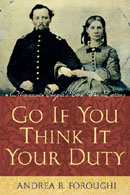
by Andrea R. Foroughi
Hardcover
During the Civil War, James Madison Bowler and Elizabeth Caleff Bowler courted, married, became parents, and bought a farm. They attended dances, talked politics, and confided their deepest fears. However due to the war, they went to — and through — many of these events separately, sharing them with each other through ... ... moreby Andrea R. Foroughi
Hardcover
During the Civil War, James Madison Bowler and Elizabeth Caleff Bowler courted, married, became parents, and bought a farm. They attended dances, talked politics, and confided their deepest fears. However due to the war, they went to — and through — many of these events separately, sharing them with each other through hundreds of letters they wrote between 1861-65, the years that James fought with the Third Minnesota Volunteer Regiment. The young couple soon realized war has a way of altering idealism. What had started out as an exciting adventure — a new town, new state, new marriage, and his strong love of country (a feeling shared by Lizzie who proclaimed "go if you think it your duty") — began to fade as separation and the war began to wear down both James and Lizzie. As their commitment to the war and to each other began to wane, the letters became more than love letters. The letters began to show their fears for, and frustration with, each other. Thanks to painstaking research more than a century later by U of MN grad student, Andrea R. Foroughi, the teacher Bowler and one of his students, Lizzie Caleff, unintentionally became two of that era's best historians. Their letters, and this book which also contains 10 b&w photos, now provide readers with a window into one couple's experiences during the Civil War. -
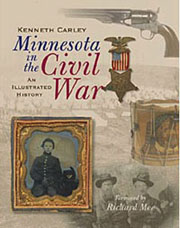
by Kenneth Carley
Hardcover / Paperback
Although Minnesota was one of the least populated states in 1861 when the Civil War broke out, and had achieved statehood less than 3 years earlier, Minnesotans —many of Scandinavian origin who had recently arrived in America, and quite a few who had not even become citizens in the U.S. yet ... ... moreby Kenneth Carley
Hardcover / Paperback
Although Minnesota was one of the least populated states in 1861 when the Civil War broke out, and had achieved statehood less than 3 years earlier, Minnesotans —many of Scandinavian origin who had recently arrived in America, and quite a few who had not even become citizens in the U.S. yet — made enormous contributions to the Union cause and its ultimate success. In several northern states, specifically MN and WI, whole regiments were made up of Scandinavian immigrants. Books and articles have been written about various individual Scandinavian-American regiments, but Carley's book -- rich in detail -- presents the first comprehensive picture of Minnesota's involvement in the Civil War. Carley, former editor of the magazine, "Minnesota History", knows historical material and his well-researched text is fully supplemented with soldiers' diaries and letters, rare photographs, tintypes, drawings, maps, uniforms and equipment. Appropriately subtitled "An Illustrated History," this book creates a vivid picture of the daily life of Minnesota's soldiers. Helpful and interestingly written are the Appendices which include a chronology of Minnesota's involvement in the Civil War and a list of Minnesota's regiments, respective officers and action in various battles. Also helpful, for one doing family research, is an index of names mentioned in the book. Lifelong interest in history is apparent in the Foreword by Richard Moe, currently President of the National Trust for Historic Preservation, and in the Introduction and Epilogue by Brian Horrigan, Exhibit Curator and also Co-chair of the Education and Cultural Heritage Outreach Committees at the MN Historical Society. Both are authors in their own right, and their talent for making history come alive through great writing is apparent in the sections they contributed to this book. Award-winning author Horrigan is also co-editor of Christmas in Minnesota. -
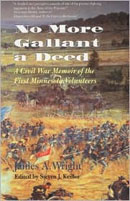
by James A. Wright, Orderly Sergeant in Company F; Steven J. Keillor, editor
Hardcover
Wright's memoir is based on his diaries and letters from this 3 years in Company F of the First Minnesota Volunteer Infantry Regiment in the Civil War. Painstakingly edited by Keillor, this book has been called the fullest personal account of ... ... moreby James A. Wright, Orderly Sergeant in Company F; Steven J. Keillor, editor
Hardcover
Wright's memoir is based on his diaries and letters from this 3 years in Company F of the First Minnesota Volunteer Infantry Regiment in the Civil War. Painstakingly edited by Keillor, this book has been called the fullest personal account of the battles, marches, and soldier life of one of the most renowned regiments in the Army of the Potomac. Richard Moe, referred to earlier on this page, has written that this book "is one of the best first-person accounts of the First Minnesota's remarkable story. It is certainly the most complete." This regiment took part in every significant battle and action in the war in the East from 1861 to 1864; Bull Run, the Peninsula Campaign, Antietam, Fredericksburg, Gettysburg, and Bristoe Station. At Gettysburg, the First Minnesota halted the Confederate charge, and suffered an 82 percent casualty rate. Wright's account of this battle is striking in its description of the horror the men felt at facing their foes, their determination to do their duty, and the shock of the loss of so many of their comrades. Wright recalls the long marches, the poor food, the inadequate shelter, the dedicated officers, the debilitating illnesses, the longing for home, and yet a sense of pride to preserve the Union. Keillor, a college teacher and author of books based on various facets of MN history, "stumbled" upon Wright's the letters and manuscript-in-the-making while Keillow was doing research for another book. -
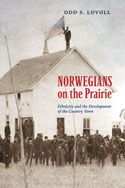
by Odd Lovoll
Hardcover / Paperback
Lovoll, born in Norway and professor emeritus of history at St. Olaf College, has authored many books and articles on Norwegian immigration to the Upper Midwest. His earlier books, and those by many other authors, have generally been centered on experiences immigrants faced in big cities or on the hardships ... ... moreby Odd Lovoll
Hardcover / Paperback
Lovoll, born in Norway and professor emeritus of history at St. Olaf College, has authored many books and articles on Norwegian immigration to the Upper Midwest. His earlier books, and those by many other authors, have generally been centered on experiences immigrants faced in big cities or on the hardships and adversity they lived through as they cleared the prairie preparing for a livelihood of farming. In this book, however, Lovoll's subject is the lingering impact on small towns that 100 and 150 years earlier had served as trading centers for farmers. Lovoll focuses on three communities located on Minnesota's western prairie; Benson, Madison, and Starbuck, MN. In this work, he points out that "family stability and inmarrriage," reinforced by the Lutheran Church, sustained the Norwegian language and customs for an extended period" and this theory led Lovoll to examine the historical, economic, cultural, religious and political history of these communities from the 1860s until the present. The author's academic background becomes obvious to the reader. Lovoll's meticulous research into census data, careful reading of local newspapers, and extensive interviews with descendants of Norwegian immigrants support his conclusion that strong ties to homeland are visible today in each town’s social, political and religious character. -

by Erling N. Rolfsrud
Paperback
Twenty-four true stories about the people who shaped the "Flickertail State." ... moreby Erling N. Rolfsrud
Paperback
Twenty-four true stories about the people who shaped the "Flickertail State." -
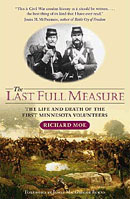
by Richard Moe
Paperback
Minnesota, the newest state in the Union, became the first to send volunteers to fight in the Civil War. That "first" perhaps marked the beginning of Minnesota's ongoing reputation as a very citizen-participatory state. In 1861, President Abraham Lincoln put out a call for troops. Shortly after that, MN Governor Ramsey volunteered 1,000 men ... ... moreby Richard Moe
Paperback
Minnesota, the newest state in the Union, became the first to send volunteers to fight in the Civil War. That "first" perhaps marked the beginning of Minnesota's ongoing reputation as a very citizen-participatory state. In 1861, President Abraham Lincoln put out a call for troops. Shortly after that, MN Governor Ramsey volunteered 1,000 men to defend the nation. Ramsey's plea was answered by 262 men, many new to MN or new to the US, and the First Minnesota Volunteer Infantry Regiment — comprised of farmers, loggers, clerks, teachers, students, and lawyers — was formed. The volunteers were young, mainly in their late teens to mid-twenties, and some had not had time to even become U.S. citizens yet. Of the 262, only 47 volunteers came home. In describing this book, Pulitzer Prize-winning Civil War author James McPherson wrote: "This is Civil War combat history as it should be written….the best thing of its kind that I have ever read." -
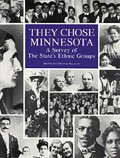
June Drenning Holmquist; ed.
Paperback
Why did emigrants leave their homelands and move to Minnesota? Where in the state did they settle? What did they do, and how did they organize? How did they maintain their ethnicity? These are just a few of many deep questions addressed in this massive document making the subtitle, "A Survey of ... ... moreJune Drenning Holmquist; ed.
Paperback
Why did emigrants leave their homelands and move to Minnesota? Where in the state did they settle? What did they do, and how did they organize? How did they maintain their ethnicity? These are just a few of many deep questions addressed in this massive document making the subtitle, "A Survey of the State's Ethnic Groups", almost a misnomer. This is not "survey", as in quick scan or exit poll. This is an 8 1/2" X 11", 614-page tome with photos, illustrations, and charts covering 60 ethnic groups that settled in Minnesota. This is by far the largest and most expensive book carried by Rural Route Bookstore, and if it weren't worth the price, we wouldn't carry it. The various scholarly contributors read like a Who's Who of ethnic studies. When published, the St. Paul Dispatch-Pioneer Press wrote, "If you are a descendant of Icelanders or Lebanese, Greeks or Japanese, you will find interesting material in this book about your forebears and how it was when they settled in Minnesota." And yes, all five Scandinavian groups are covered in detail in this "must have" book for historian or genealogist.
